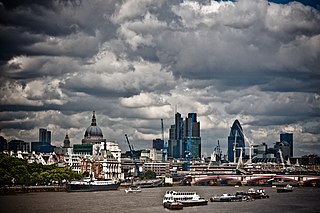Notes
| Common fields | ||
|---|---|---|
| Parallel fields | ||
| Related systems | ||
| See also | ||
Report of the Review Committee on Insolvency Law and Practice (1982) Cmnd 8558, also known as the "Cork Report" was an investigation and set of recommendations on modernisation and reform of UK insolvency law. It was chaired by Kenneth Cork and was commissioned by the Labour government in 1977. The Cork Report was followed by a White Paper in 1984, A Revised Framework for Insolvency Law (1984) Cmnd 9175, and these led to the Insolvency Act 1986.
The two key principles suggested by Cork were:
Insolvency laws were treated by the trading community as an instrument in the process of debt recovery and constitute in many cases, the sanction of last resort for the enforcement of obligations; Insolvency laws were the means by which the demands of commercial morality can be met, through the investigation and the disciplinary measures and restrictions imposed on the bankrupt.
The central argument of the report was that too many companies were simply left to die, when they could be revived, saved or brought to a close in a more orderly way. Cork advocated that the law should encourage a "rescue culture", to restore companies back to profitability, which would be in the longer term interests of creditors.
It also said there was no place for automatic crystallisation of floating charges ‘in modern insolvency law’, on the basis that it would adversely affect other creditors and that the charge did not need to be registered.
Cork recommended that private insolvency practitioners should be professionally regulated to ensure adequate standards of competence and integrity. Creditors be given a greater voice in the choice of the liquidator and new penalties and constraints be placed on errant directors. Cork also proposed reforms designed to increase the survival chances of firms in difficulties. He had informed the press, on the establishment of his committee, that many more companies could be saved if outside administrators could be brought into the process.
Bankruptcy is a legal process through which people or other entities who cannot repay debts to creditors may seek relief from some or all of their debts. In most jurisdictions, bankruptcy is imposed by a court order, often initiated by the debtor.

Liquidation is the process in accounting by which a company is brought to an end in Canada, United Kingdom, United States, Ireland, Australia, New Zealand, Italy, and many other countries. The assets and property of the company are redistributed. Liquidation is also sometimes referred to as winding-up or dissolution, although dissolution technically refers to the last stage of liquidation. The process of liquidation also arises when customs, an authority or agency in a country responsible for collecting and safeguarding customs duties, determines the final computation or ascertainment of the duties or drawback accruing on an entry.
In law, receivership is a situation in which an institution or enterprise is held by a receiver—a person "placed in the custodial responsibility for the property of others, including tangible and intangible assets and rights"—especially in cases where a company cannot meet its financial obligations and is said to be insolvent. The receivership remedy is an equitable remedy that emerged in the English chancery courts, where receivers were appointed to protect real property. Receiverships are also a remedy of last resort in litigation involving the conduct of executive agencies that fail to comply with constitutional or statutory obligations to populations that rely on those agencies for their basic human rights.

In accounting, insolvency is the state of being unable to pay the debts, by a person or company (debtor), at maturity; those in a state of insolvency are said to be insolvent. There are two forms: cash-flow insolvency and balance-sheet insolvency.
An individual voluntary arrangement (IVA) is a formal alternative in England and Wales for individuals wishing to avoid bankruptcy. In Scotland, the equivalent statutory debt solution is known as a protected trust deed.
Wrongful trading is a type of civil wrong found in UK insolvency law, under Section 214 Insolvency Act 1986. It was introduced to enable contributions to be obtained for the benefit of creditors from those responsible for mismanagement of the insolvent company. Under Australian insolvency law the equivalent concept is called "insolvent trading".
In law, a liquidator is the officer appointed when a company goes into winding-up or liquidation who has responsibility for collecting in all of the assets under such circumstances of the company and settling all claims against the company before putting the company into dissolution. Liquidator is a person officially appointed to 'liquidate' a company or firm. Their duty is to ascertain and settle the liabilities of a company or a firm. If there are any surplus, then those are distributed to the contributories.
As a legal concept, administration is a procedure under the insolvency laws of a number of common law jurisdictions, similar to bankruptcy in the United States. It functions as a rescue mechanism for insolvent entities and allows them to carry on running their business. The process – in the United Kingdom colloquially called being "under administration" – is an alternative to liquidation or may be a precursor to it. Administration is commenced by an administration order.

The United Kingdom company law regulates corporations formed under the Companies Act 2006. Also governed by the Insolvency Act 1986, the UK Corporate Governance Code, European Union Directives and court cases, the company is the primary legal vehicle to organise and run business. Tracing their modern history to the late Industrial Revolution, public companies now employ more people and generate more of wealth in the United Kingdom economy than any other form of organisation. The United Kingdom was the first country to draft modern corporation statutes, where through a simple registration procedure any investors could incorporate, limit liability to their commercial creditors in the event of business insolvency, and where management was delegated to a centralised board of directors. An influential model within Europe, the Commonwealth and as an international standard setter, UK law has always given people broad freedom to design the internal company rules, so long as the mandatory minimum rights of investors under its legislation are complied with.

United Kingdom insolvency law regulates companies in the United Kingdom which are unable to repay their debts. While UK bankruptcy law concerns the rules for natural persons, the term insolvency is generally used for companies formed under the Companies Act 2006. "Insolvency" means being unable to pay debts. Since the Cork Report of 1982, the modern policy of UK insolvency law has been to attempt to rescue a company that is in difficulty, to minimise losses and fairly distribute the burdens between the community, employees, creditors and other stakeholders that result from enterprise failure. If a company cannot be saved it is "liquidated", so that the assets are sold off to repay creditors according to their priority. The main sources of law include the Insolvency Act 1986, the Insolvency Rules 1986, the Company Directors Disqualification Act 1986, the Employment Rights Act 1996 Part XII, the Insolvency Regulation (EC) 1346/2000 and case law. Numerous other Acts, statutory instruments and cases relating to labour, banking, property and conflicts of laws also shape the subject.
The Company Directors Disqualification Act 1986 forms part of UK company law and sets out the procedures for company directors to be disqualified in certain cases of misconduct.
Under UK insolvency law an insolvent company can enter into a company voluntary arrangement (CVA). The CVA is a form of composition, similar to the personal IVA, where an insolvency procedure allows a company with debt problems or that is insolvent to reach a voluntary agreement with its business creditors regarding repayment of all, or part of its corporate debts over an agreed period of time. The application for a CVA can be made by the agreement of all directors of the company, the legal administrators of the company, or the appointed company liquidator.

Krasner v McMath [2005] EWCA Civ 1072 is a UK labour and insolvency law case concerning the priority of payments to workers of an insolvent company in priority to other creditors.
Bankruptcy in Irish Law is a legal process, supervised by the High Court whereby the assets of a personal debtor are realised and distributed amongst his or her creditors in cases where the debtor is unable or unwilling to pay his debts.

Re Kayley Vending Ltd [2009] EWHC 904 (Ch) is a UK insolvency law case concerning the pre-packaged administration procedure when a company is unable to repay its debts.

Re Harris Simons Construction Ltd [1989] 1 WLR 368 is a UK insolvency law case concerning the administration procedure when a company is unable to repay its debts.
Administration in United Kingdom law is the main kind of procedure in UK insolvency law when a company is unable to pay its debts. The management of the company is usually replaced by an insolvency practitioner whose statutory duty is to rescue the company, save the business, or get the best result possible. It is the equivalent of Chapter 11, Title 11, United States Code, although with significant differences. While creditors with a security interest over all a company's assets could control the procedure previously through receivership, the Enterprise Act 2002 made administration the main procedure.
The Loreburn Report, or the Report of the Company Law Amendment Committee (1906) Cd 3052 was a report to the UK Parliament on the reform of company law. It discussed various issues of corporate financial reform. Three members of the committee dissented on the question of retaining the floating charge in UK insolvency law, and recommended it be abolished by statute.

Cayman Islands bankruptcy law is principally codified in five statutes and statutory instruments:

Re MC Bacon Ltd [1991] Ch 127 is a UK insolvency law case relating specifically to the recovery the legal costs of the liquidator in relation to an application to set aside a floating charge as an unfair preference.